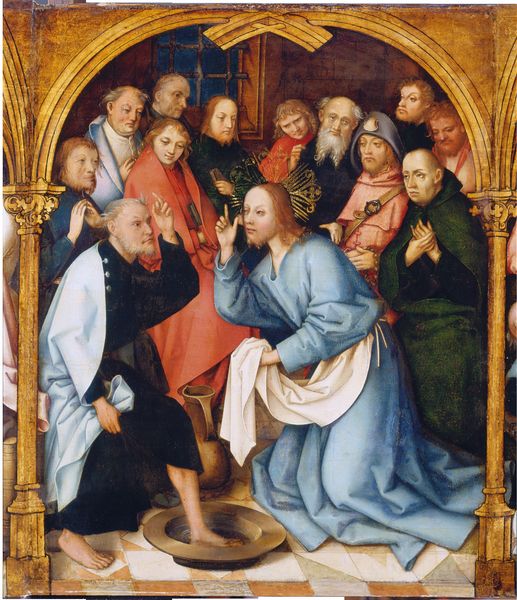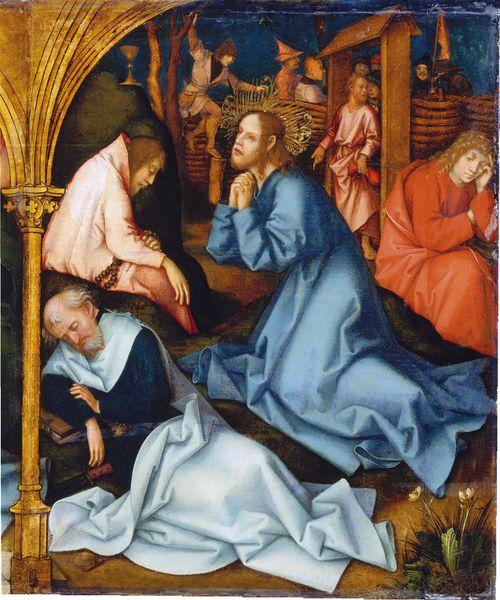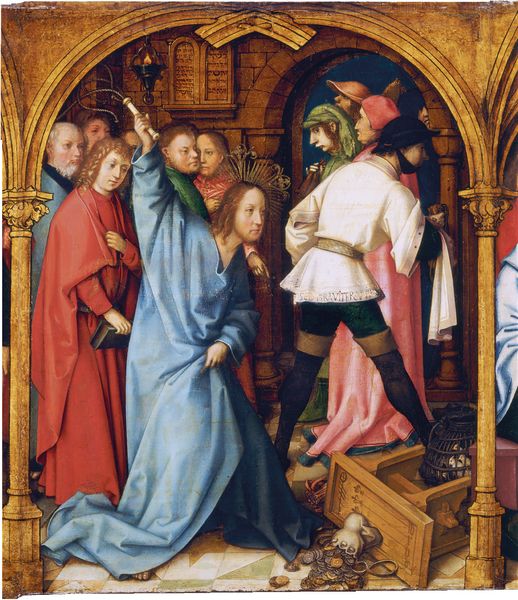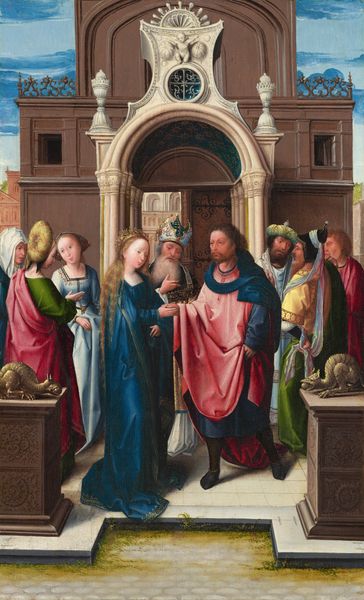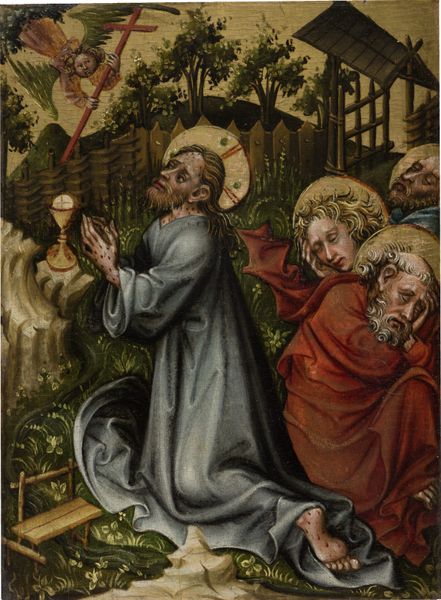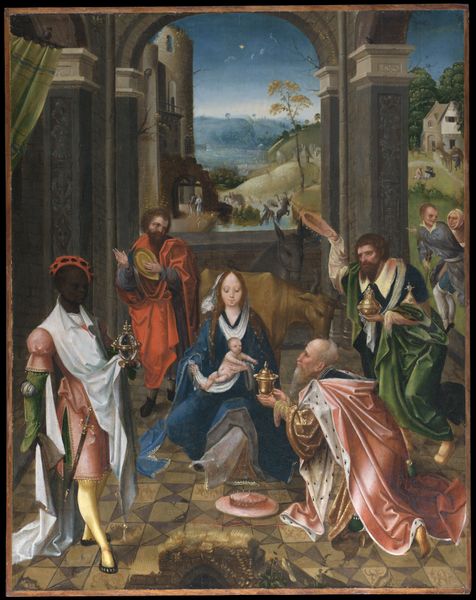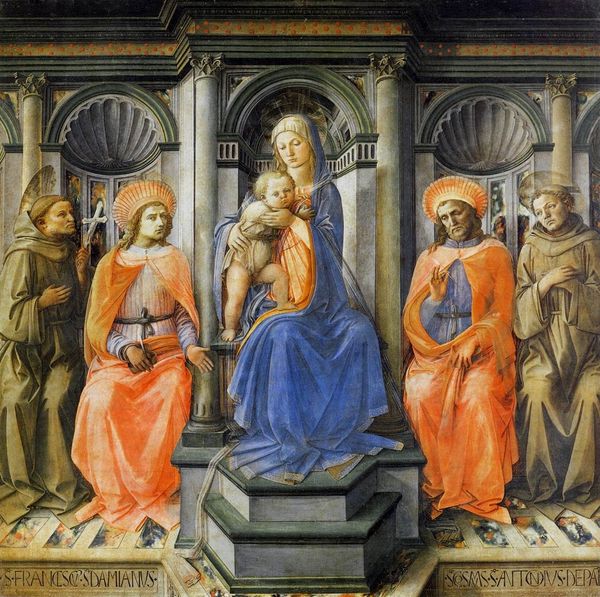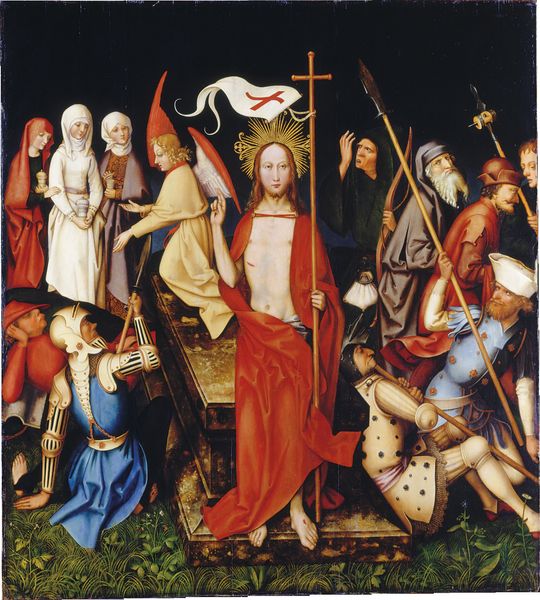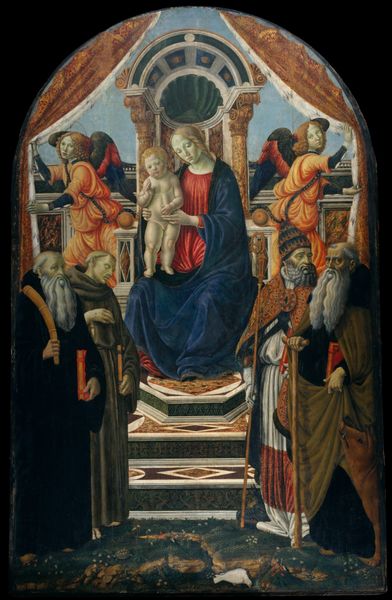
painting, oil-paint
#
narrative-art
#
animal
#
painting
#
oil-paint
#
landscape
#
figuration
#
11_renaissance
#
oil painting
#
studio composition
#
jesus-christ
#
13_16th-century
#
history-painting
#
italian-renaissance
Dimensions: 267.1 x 64.5 cm
Copyright: Public Domain
Curator: Welcome. We're standing before Hans Holbein the Elder's “The Entry into Jerusalem,” an oil painting dating back to 1501. It’s currently housed in the Städel Museum. Editor: It strikes me as a composition steeped in both formality and restrained energy. The use of colour, especially that pale blue, lends it an almost dreamlike quality despite the narrative’s historical significance. Curator: Absolutely. Holbein has created a dynamic scene, with figures densely packed and their gazes directed both towards and away from the central figure of Jesus. Consider how the use of line and shape creates distinct spatial layers, drawing the eye into the implied depth of the cityscape. Editor: And isn’t it fascinating how Holbein chooses to depict the event? We have Jesus on the donkey, but then a whole host of individuals are rendered with striking diversity in their facial expressions and garb. I immediately wonder what roles and levels of access each represents. What are the power dynamics enacted within this historical instant? Curator: It's an intriguing interpretation. Holbein’s figures, however diverse, are meticulously placed. The figures create a counterpoint between the divine and the earthly. Notice the meticulous brushwork in their faces compared to the almost cursory rendering of background foliage. Editor: True, there's a distinct class dimension, represented in both garments and attitude, I think, that is heightened through contrast and juxtaposition. Curator: Indeed, we see a distinct use of Renaissance compositional techniques, creating layers of narrative interest while simultaneously highlighting Christ as a divine being and underscoring the role of those who were present to witness what Christianity regards as the pivotal moment in Salvation history. Editor: Seeing those stark differences reminds us that representation never happens in a vacuum; it serves agendas, perspectives and social positions whether intentional or unconscious. What do you think this composition communicates to modern-day viewers encountering Holbein's work within today's very different context? Curator: That it endures precisely due to its complex structure, which creates multiple possibilities for interpreting the significance of each element within it, that is something to meditate on. Editor: I think Holbein prompts ongoing questions regarding representation, identity and the stories art constructs in shaping both historical record and human consciousness itself.
Comments
Join the conversation
Join millions of artists and users on Artera today and experience the ultimate creative platform.
